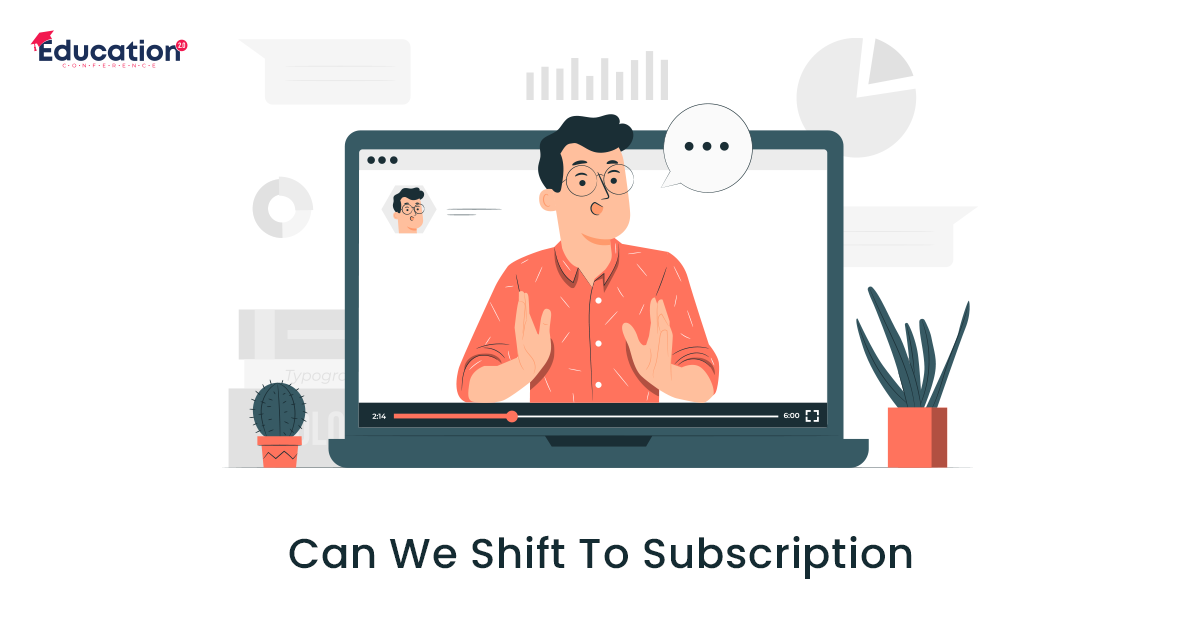Learning has changed during the pandemic, moving away from classrooms and textbooks and instead taking advantage of resources such as Zoom classes and PDFs. Although there are many reasons behind this change, one major factor is undoubtedly the rapid digital transformation.
The e-learning market is expected to grow at a CAGR of more than 13% between 2021 and 2026, reaching $388.23 billion.
Subscription-based learning is also becoming more popular. Education events in the USA have highlighted how working professionals have also started using subscription learning to expand their skill sets and education.
This blog will go over what businesses can do to ride the subscription-learning wave, how to make subscription learning more efficient, and how to ease the transition into subscription learning.
Subscription Learning: What Is It?
Would you prefer an hour-long online course or four 15-minute bite-sized online courses?
Subscription learning is an online way of education where e-learning courses or modules are broken down into smaller consumable 'nuggets' of information. These nuggets can be accessed for a yearly/monthly subscription fee.
For instance, in a course on LinkedIn Learning - the lessons are divided into 2 to 3-minute videos and are only available to course subscribers.
Subscription learning courses may include the following:
- Online instructor-led course recordings
- Webinar or workshop recordings
- Online self-paced courses
- A vast library of resources, such as research reports and publications (similar to Adobe's all-access learning subscription).
The Process Of Subscription Learning
Subscription learning allows subscribers to access course content from any location and on any device, such as mobile phones, laptops, or tablets. Microlearning is central to subscription learning. Subscription learning allows learners to consume learning content in smaller bites while also giving them time to assimilate what they are learning.
Subscription learning also allows you to improve the learning experience by providing spaced content.' You can, for example, take a break between lessons and learn at your own pace.
The Advantages of Subscription Learning
Subscription learning is becoming increasingly popular for the following reasons:
Advantages for students:
Monthly subscriptions are less expensive, and subscribers can cancel at any time.
Spaced learning makes it simple to remember information. Learners can even revisit sections of the course content that they found difficult to understand at no extra charge.
Subscription learning makes it simple to develop a habit of continuous learning. It holds subscribers accountable for finishing their courses.
Business Advantages:
Subscription learning can help employers save money on training by onboarding new employees and upskilling their existing workforce.
Subscriptions generate recurring revenue, which provides the business with financial stability and predictability.
Making Subscription Learning More Effective
Many education conferences in 2022 have already covered the fundamentals and benefits of subscription learning; let's look at how e-learning companies can make subscription learning more efficient:
Recognize Different Audiences
As previously stated, subscription learning is used by a diverse group of users, including students and working professionals. That is why it is critical to meet their various requirements. Working professionals, for example, will require access to courses with in-depth knowledge and hands-on exercises in their field of expertise.
Continuously Engage Learners
Learning subscriptions are similar to learning newsletters. Daily interaction with them in the form of course nuggets, summaries of lessons learned, and quizzes can help them retain more information than a single cram session. Engaging users regularly will also increase the likelihood of course completion and decrease churn.
Making the Transition to Subscription Learning Easier
If you believe in the value of subscription learning and want to incorporate it into your learning platform, an automated subscription management platform is an excellent place to start.
Subscription and billing management platforms allow for large-scale testing of pricing models. Managing product catalogs efficiently while providing multiple payment options, automated billing, and self-service checkout is critical to the success of subscription learning.
Learn more about how subscription learning models transform learning at an upcoming education conference, the Education 2.0 Conference.














